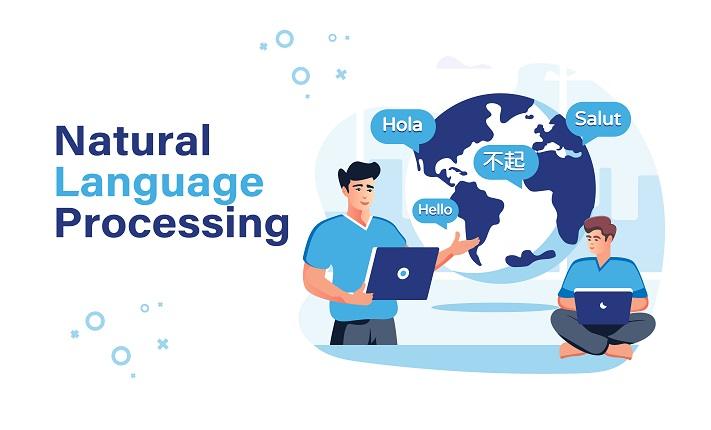Text analysis has become an integral part of many business and technological solutions in today’s data-driven world. With the vast amount of unstructured text data available, the need to efficiently process and extract valuable insights has never been greater. Best Natural Language Processing (NLP) is at the forefront of this transformation, enabling machines to understand, interpret, and generate human language. Whether you’re analyzing customer feedback, social media conversations, or product reviews, the best Natural Language Processing (NLP) methods can drastically improve the quality and accuracy of your text analysis.
In this blog post, we’ll explore the most effective Natural Language Processing methods for text analysis, explaining how they can help you extract insights, automate tasks, and improve decision-making.
What is Natural Language Processing?
Before diving into the best NLP methods for text analysis, it’s important to understand what is natural language processing and how it functions.
Natural Language Processing (NLP) is a branch of artificial intelligence (AI) focused on enabling machines to process and understand human language. It allows computers to comprehend, interpret, and generate text or speech in a way that mimics human understanding. From identifying sentiments in social media posts to automating customer service tasks, NLP is transforming the way businesses and technology interact with language.
By leveraging NLP, companies can gain insights from massive datasets, automate time-consuming tasks, and enhance user experience through more intuitive and accurate language-based systems. In the context of natural language processing projects, NLP methods play a key role in improving productivity and unlocking valuable insights from unstructured text data.
Best Natural Language Processing Methods for Text Analysis
Now that we’ve defined NLP, let’s dive into the best Natural Language Processing methods that are most commonly used in text analysis:
1. Text Preprocessing
The first step in any best natural language processing project is to clean and preprocess the text data. Raw text often contains noise, such as punctuation marks, stopwords (commonly used words like “the,” “is,” etc.), and irregular formatting. Preprocessing techniques help make the text data more manageable and ready for analysis.
Key techniques:
- Tokenization: Breaking down the text into smaller chunks (tokens), such as words or sentences.
- Stopword Removal: Removing common words that do not add significant meaning to the analysis.
- Stemming and Lemmatization: Reducing words to their base or root form, such as changing “running” to “run.”
By preparing the text data correctly, you set the foundation for more accurate NLP analysis.
2. Sentiment Analysis
One of the most popular applications of NLP is sentiment analysis, which involves determining the emotional tone behind a series of words. This method is commonly used to analyze customer feedback, reviews, or social media posts to gauge public sentiment regarding a product, service, or brand.
Key techniques:
- Lexicon-based methods: These rely on predefined lists of words associated with positive or negative sentiments.
- Machine learning-based methods: Using algorithms such as Support Vector Machines (SVM) or deep learning models to classify text into positive, negative, or neutral sentiment categories.
Sentiment analysis can be incredibly useful for businesses to understand their customer base, improve product offerings, and respond to feedback more effectively.
3. Named Entity Recognition (NER)
Named Entity Recognition (NER) is an essential NLP method that identifies and classifies key elements in text, such as names of people, organizations, locations, dates, and more. This method is critical for extracting valuable data from unstructured text and can be used in various natural language processing projects, such as information retrieval and content categorization.
Key applications:
- Document classification: Identifying the main topics of a document based on the entities it mentions.
- Business intelligence: Extracting relevant entities from news articles to track market trends or competitor activity.
By using NER, businesses can extract structured information from unstructured data, making it easier to analyze and take action.
4. Topic Modeling
Topic modeling is a powerful NLP technique used to discover the hidden thematic structure in a large collection of texts. Methods like Latent Dirichlet Allocation (LDA) group words into topics based on their co-occurrence patterns, helping businesses identify trends, categorize content, and organize large datasets more effectively.
Key techniques:
- Latent Dirichlet Allocation (LDA): A popular algorithm that discovers topics in large datasets of text by analyzing the distribution of words.
- Non-negative Matrix Factorization (NMF): A technique for factorizing matrices to find hidden topics in documents.
Topic modeling is widely used in best natural language processing projects such as document clustering, recommendation systems, and content categorization.
5. Text Classification
Text classification is another essential NLP method that involves assigning predefined categories to text based on its content. Whether it’s categorizing emails as spam or non-spam, or sorting customer queries into different service categories, text classification helps automate many processes that would otherwise require manual effort.
Key techniques:
- Supervised learning: Using labeled training data to train a model to predict categories for unseen text.
- Deep learning models: Leveraging advanced techniques like Convolutional Neural Networks (CNN) or Recurrent Neural Networks (RNN) for more accurate classification.
Text classification is a powerful tool in NLP that supports applications such as content moderation, customer support automation, and sentiment analysis.
6. Machine Translation
Machine translation (MT) is an NLP method that enables the automatic translation of text from one language to another. Using sophisticated algorithms and neural networks, MT systems can provide high-quality translations, which is especially useful for businesses operating in multiple languages or targeting a global audience.
Key techniques:
- Statistical Machine Translation (SMT): Based on statistical models to translate text based on data.
- Neural Machine Translation (NMT): Uses deep learning models, particularly Recurrent Neural Networks (RNNs), for more fluent and context-aware translations.
In the context of natural language processing in artificial intelligence, machine translation plays a key role in overcoming language barriers and enabling global communication.
Why Choose a Natural Language Processing Service?
The power of NLP lies in its ability to automate and enhance complex text analysis tasks. However, implementing NLP methods requires a deep understanding of algorithms, models, and frameworks. If you lack in-house expertise, choosing the best natural language processing service can help you leverage cutting-edge technologies and achieve your business objectives with ease.
A Natural Language Processing service can provide tailored solutions to suit your specific needs, whether you’re looking to improve customer service with chatbots, analyze customer feedback, or implement text mining for decision-making.
Conclusion
The field of Natural Language Processing is rapidly advancing, providing businesses with innovative methods to extract valuable insights from vast amounts of unstructured text data. From sentiment analysis and named entity recognition to topic modeling and machine translation, the best Natural Language Processing methods are revolutionizing text analysis.
By leveraging these NLP methods, businesses can automate complex tasks, gain deeper insights, and improve decision-making. If you’re looking for expert guidance in implementing Natural Language Processing methods for your natural language processing projects, consider exploring the best natural language processing service to maximize your project’s potential and drive success.
Stay updated with our latest news and offerings! Follow us on Facebook, Instagram, and LinkedIn.


